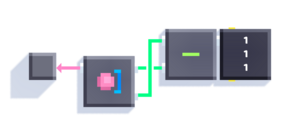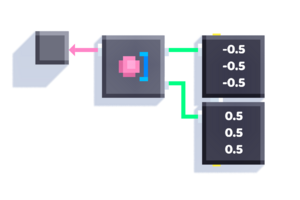Get Size: Difference between revisions
No edit summary |
-u ndefined- (talk | contribs) m (Add links) |
||
| (One intermediate revision by one other user not shown) | |||
| Line 8: | Line 8: | ||
}} | }} | ||
Outputs the size of an object as min and max. | Outputs the size of an object as min and max. | ||
If the inputs are left unwired, outputs the size of the world. | If the inputs are left unwired, outputs the size of the world. | ||
| Line 21: | Line 22: | ||
: [[File:Get size example2.png|thumb|none|Geometric size]] | : [[File:Get size example2.png|thumb|none|Geometric size]] | ||
== Example == | |||
See [[Geometric center of an object]]. | |||
== Related == | |||
* [[Get Position]] | |||
[[Category:Blocks]] | [[Category:Blocks]] | ||
Latest revision as of 14:33, 27 June 2024
Get Size
| Type | Script block |
| Collider | None |
| Folder | Objects |
| Ports | |
|---|---|
| Inputs | Object |
| Outputs | Min Max |
Outputs the size of an object as min and max.
If the inputs are left unwired, outputs the size of the world.
Notes
- The size output is based on the number of cubic "block spaces" the object occupies in the level editor, not the actual number of filled-in voxels.
- So an 8x8x8 cube of voxels (completely filling one block space) and a tiny 1x1x1 cube of voxels (a single voxel) will both show the same size of (-0.5, -0.5, -0.5) min and (0.5, 0.5, 0.5) max.
- By default, the Get Size block outputs the volumetric size of an object (the distances from the center to the edges):
- To get the geometric size of an object (the total distance from one edge to the other) use this simple method:

Geometric size
Example
See Geometric center of an object.

